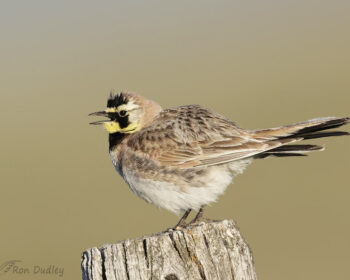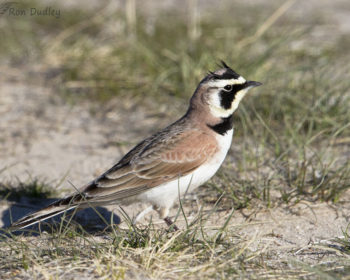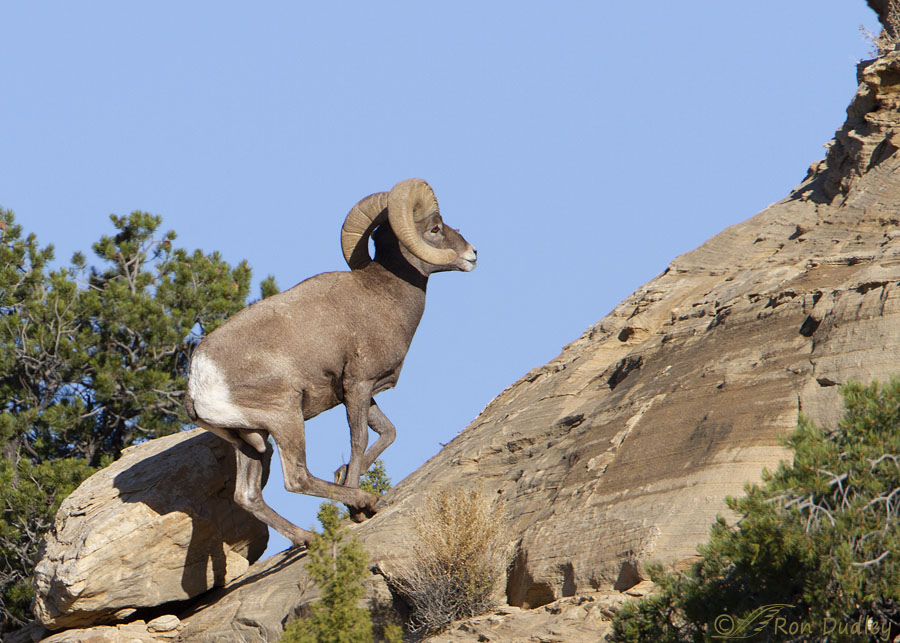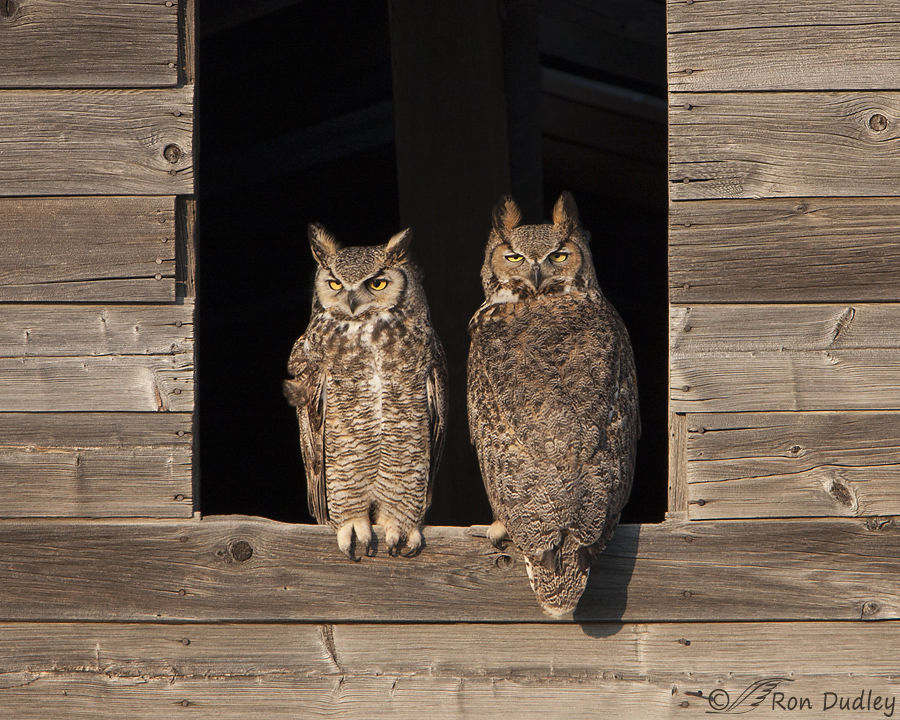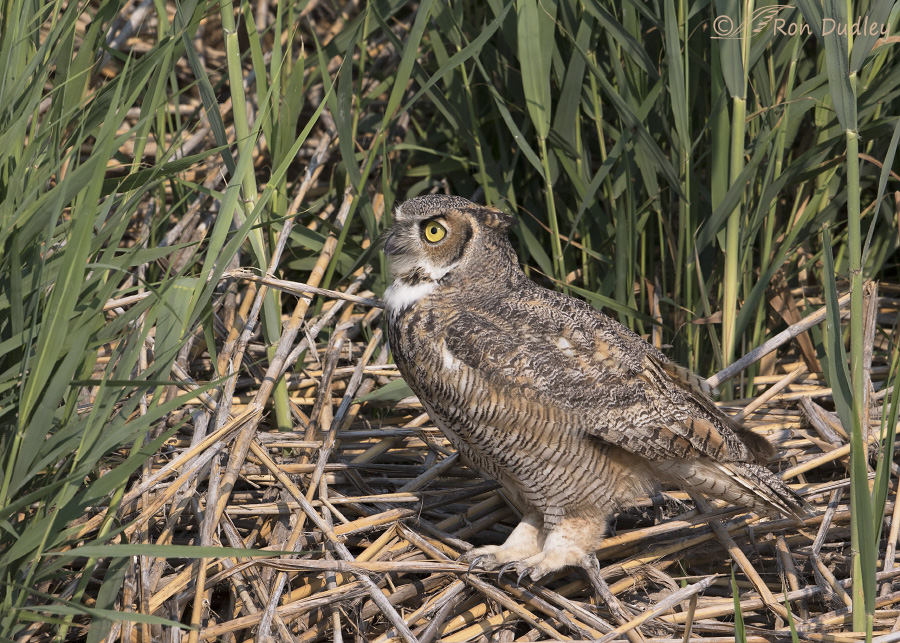Tag: horns
Yesterday’s Horned Larks And A Major Case Of Separation Anxiety
An Impressive Desert Bighorn Ram
Owls And Plumicorns
Great Horned Owl In The Bear River Wetlands
Great Horned Owl Framed By Tamarisk
Typically when I find a Great Horned Owl in a natural setting it’s so deeply buried in the tree or foliage that it can barely be seen. This is a deliberate behavior, at least in part to avoid mobbing birds of many species. Crows, for example, will invariably mob an exposed GHO, pursuing it from tree to tree and calling out to other crows to recruit them to join in. 1/800, f/8, ISO 500, 500 f/4, 1.4 tc, natural light, not baited, set up or called in This owl, and one other, perched in the tamarisk for about a week but on most days they were virtually impossible to see unless you knew where to look. But on two cold, early mornings I found one of them in this spot where it was exposed to the warming rays of the sun. Its breast and belly feathers are wet, as are the drooping ear tufts. These birds sleep during much of the day but their slumber is light and alert as evidenced by their ear tuft (“horn”) movements in response to any slight sound, even with eyes closed – a behavior that’s interesting to observe if you’re lucky enough to be sufficiently close to a sleeping owl. Ron
Great Horned Owls In The Montana Wind
I’ve posted before about the Great Horned Owls on the family farm in nw Montana. That farm is near Cut Bank, Montana which is famous (infamous) for its howling winds. 1/1000, f/8, ISO 500, 500 f/4, 1.4 tc, natural light, not baited, set up or called in So many of my images of those farm owls show the effects of the wind on the owls. The wind was only moderate when I took this shot so about the only effect you can see from it is the leaning ear tufts (horns). Even at this wind speed you can hear it whistling through the granary cutouts where these birds like to perch When I’m shooting from a tripod instead of from my pickup it’s difficult to get sharp shots because of the effects of the wind on my long lens. 1/160, f/10, ISO 500, 500 f/4, 1.4 tc, natural light, not baited, set up or called in But when the wind really howls the birds seek refuge. This owl liked to hunker down deep in this Poplar tree as an escape. It was so deeply buried in the tree that I could only get fleeting glimpses of it when the wind would blow some of the branches and leaves in front of the bird to the side. At times the wind would blow the ear tufts almost flat on its head. This owl is leaning into the wind to keep from being blown off the perch. 1/500, f/8, ISO 500, 500 f/4, 1.4…
Horned Larks
Horned Larks aren’t one of the “glamour species” for many, probably partly due to the fact that they’re so widespread and common. They’re found throughout most of North America and much of Eurasia. One of my scientific heroes, Carl (Carolus) Linnaeus, assigned the Latin name Eremophila alpestris (meaning “lark of the mountains”) to this bird, despite the fact that they commonly inhabit prairies, farmlands and deserts. These were the most common birds, by far, on the Montana farm where I grew up and they always bring back fond memories for me. Many folks think of them as just another “mostly brown little bird” but when you get close their colors and patterns really stand out. I really enjoy their soft, subtle call and have spent many hours watching them up close through my lens. These photos were taken on Antelope Island in the last few weeks. 1/1600, f/6.3, ISO 500, 500 f/4, 1.4 tc, natural light, not set up or called in The sexes are similar, though the colors of the males are more vivid and the namesake “horns” of the female are less evident than those of the male. This is the female. 1/1600, f/6.3, ISO 500, 500 f/4, 1.4 tc, natural light, not set up or called in She posed for me for quite a while before flying off. 1/2000, f/7.1, ISO 500, 500 f/4, 1.4 tc, natural light, not set up or called in This is the male, in a setting that shows more habitat. Often the black horns are laid back flat on…
Horned Larks Blowin’ in the Wind
I have particularly fond memories of Horned Larks from growing up on our northwestern Montana family farm near Cut Bank, Montana. The fallow barley fields and adjacent short grass prairies abounded with them. But since I began photographing birds I’ve had very few opportunities with them here in Utah – until last week when had a grand time with multiple cooperative larks in the foothills of the Stansbury Mountains. And yes, the wind was blowing briskly – a perfect situation to remind me of those Montana larks! Singing in the wind The wind seemed to inspire the males to sing as they all seemed to be singing up a storm on this day, despite the early February date. Blown off the perch While it may look like this male is taking flight, in reality it was being blown off the perch by a sudden gust of wind. If it had been taking off, both wings would be extended. Wind- disheveled feathers In this photo, the wind updraft from the rock perch blew a perfect semicircle of his upper chest feathers into his black neck ring, making him look pretty silly. Very obvious “horns” This photo shows the “horns” (occipital feather tufts) that are characteristic of the species. The horns are found on both sexes but they are much less obvious in the female and rarely erected. This frontal view of the head shows the horns most distinctly when they are raised. Horns laying almost flat At times the horns are laid flat against the…


